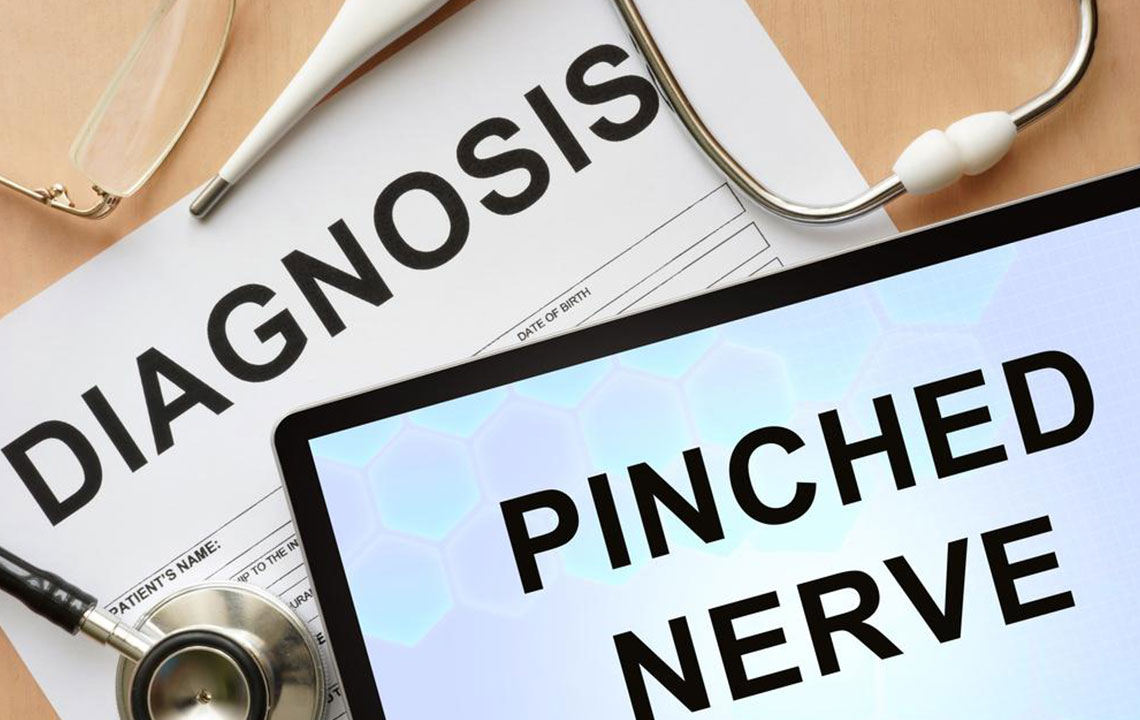Know about the Pinched Nerve Treatment, Causes, and Symptoms

Are you experiencing neck or back pain? If you experience tingling, burning, numbness, or weakness along this pain, you may have a pinched nerve. A pinched nerve occurs when surrounding tissues such as bones, cartilage, muscles, or tendons, apply pressure on a nerve. The most commonly affected areas are the back and neck, but it can affect any nerve. The medical term for a pinched nerve is radiculopathy. A radiculopathy is caused when one or more nerves are compressed, and this causes loss or disruption of nerve function. In radiculopathy, the compression occurs at the nerve root, just as it exits the spinal cord. The compression of the nerve interferes with its ability to transmit signals. A pinched nerve commonly occurs in the back, neck, elbows, and wrists. The symptoms of a pinched nerve depend on the nerve that is compressed. The symptoms can be seen along the distribution of the nerve and can affect the muscles that are supplied by that nerve. With proper pinched nerve treatment, most people can recover within a few weeks. In some people, despite adequate pinched nerve treatment, the condition can develop a chronic condition.
Symptoms of pinched nerve-
The symptoms of a pinched nerve can be varied since it depends on the distribution and functions of the affected nerve. However, there are a few common symptoms that hint at a pinched nerve. The symptoms are-
- Numbness
- Radiating pain that can be shooting, stabbing, prickling, burning, etc.
- Paresthesias (abnormal sensations such as tingling)
- Localized muscle weakness
Pinched nerve treatment aims to reduce the compression of the nerve. Thereby alleviate the associated symptoms.
Commonly affected nerves are-
- Median nerve at the wrist, which is called carpal tunnel syndrome.
- Ulnar nerve at the elbow
- Common peroneal nerve compression at the knee
- Sciatica (pinched nerve in the lower back)
- Cervical radiculopathy (pinched nerve in the neck)
Causes of pinched nerves-
- Pressure on a nerve causes damage to the protective covering of the nerve, called the myelin sheath. The myelin sheath also helps in the faster conduction of impulses from one nerve to another.
- Damage to the myelin sheath impairs the ability of the nerve to carry sensory and motor signals. This disruption causes the tingling, numbness, and weakness.
- In some cases, the compression is caused by bone spurs or herniated disks in the spine. Muscles and tendons can also cause pinched nerves.
- Common causes of nerve compression are—injury, obesity, arthritis, repetitive stress, and certain sports and hobbies like cycling, tennis, etc.
- Risk factors associated with pinched nerves are—sex (women are more susceptible), age, obesity, arthritis, pregnancy, prolonged bed rest, diabetes, and thyroid disorders.
Pinched nerve treatment-
Pinched nerve treatment depends on the location and cause of the nerve compression. The first line of pinched nerve treatment is providing the affected areas with enough rest. Since overuse or repetitive stress can cause nerve compression, the first thing to do for pinched nerve treatment is to immobilize the affected areas.
Other forms of pinched nerve treatment are-
- Medications
Over-the-counter pain relievers such as non-steroidal anti-inflammatory drugs (NSAIDs) like paracetamol and ibuprofen are helpful for managing the pain of nerve compression. These medications are easily available and don’t require a prescription. Common side effects of NSAIDs are—nausea, indigestion, and acid reflux. Another effective pinched nerve treatment is corticosteroid injections. Corticosteroids help to reduce the inflammation and pain of a compressed nerve. - Physical rehabilitation
Physical therapy is a great pinched nerve treatment. Exercise and physical rehabilitation help to strengthen the muscles of the neck and back, which prevent disk herniation. The core muscles can also be strengthened which will provide more support to the spinal cord, which in turn protects against nerve compression. A variety of exercises are available for pinched nerve treatment. These exercises need to be modified depending on the capacity and weaknesses of the patient. - Surgery for pinched nerve treatment
In case a conservative course of rehabilitation and medication for pinched nerve treatment does not relieve the symptoms, surgery may be indicated. The type of surgery depends on the area of the compression. Most surgeries for pinched nerve treatment are decompression procedures that aim to relieve the symptoms caused by nerve compression. Other surgical procedures for pinched nerve treatment are—laminotomy, foraminotomy, and discectomy. These procedures are performed by a neurosurgeon or an orthopedic surgeon. - Other pinched nerve treatment tips
Proper rest is essential for pinched nerve treatment. A brace or splint may be used to immobilize the affected area to speed up the recovery process. Applying cold and warm compresses can help in pinched nerve treatment. Ice packs reduce inflammation and swelling and have a mild numbing effect on pain. Warm compresses increase blood flow and promote muscle relaxation. Improving your posture, doing regular low-impact exercises, and maintaining a healthy weight are protective factors against pinched nerves. These measures can also optimize the effects of pinched nerve treatment. Pinched nerve treatment is a must for anyone suffering from nerve compression. There are many options for pinched nerve treatment which ensure that you can spend your days pain-free.


